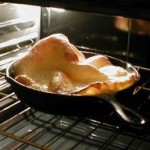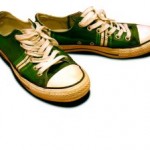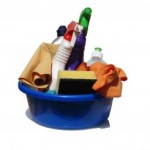 Manufacturers have made us believe that ovens can clean themselves. Although this is in part true, thanks to the self-cleaning ovens, we will still need to apply a little bit of elbow grease to keep our oven looking like new.
Manufacturers have made us believe that ovens can clean themselves. Although this is in part true, thanks to the self-cleaning ovens, we will still need to apply a little bit of elbow grease to keep our oven looking like new.
Self-cleaning ovens have a special interior pyrolytic coating that, heated at high temperature, burns off all the food and debris without using any chemicals. It’s like magic, isn’t it? But, what happens with the trays, racks, rack supports and glass door? As they have no special coating, they will continue dirty after the self-cleaning process.
So your oven may be clever enough to do some cleaning, but it still needs a helping hand!
Here are some basic steps on how to clean your self-cleaning oven:
1- Remove all trays and racks and soak them in hot soapy water.
2- Wipe any excess debris from the oven with a damp e-cloth and some washing up liquid (do not ever use a green scourer inside the oven as this can damage the special coating).
3- Open the window and turn on the kitchen hood and start the self-cleaning process (there may be some fumes and smoke, so it is better to have the area ventilated). This process can take up to 5 hours.
4- While you wait for the oven to get clean, finish with the trays and racks. Use soapy water if they are not very dirty or a degreaser if they need a strong clean up. Rinse well.
5- As soon as the oven has finished with the self-cleaning process and cooled down, you can wipe the ash from the oven with a damp soapy e-cloth. Use a degreaser to clean the glass door and finish with a glass cleaner for the outside to leave the door shiny and looking good.
So… tell us, what are your tricks for cleaning your oven?








